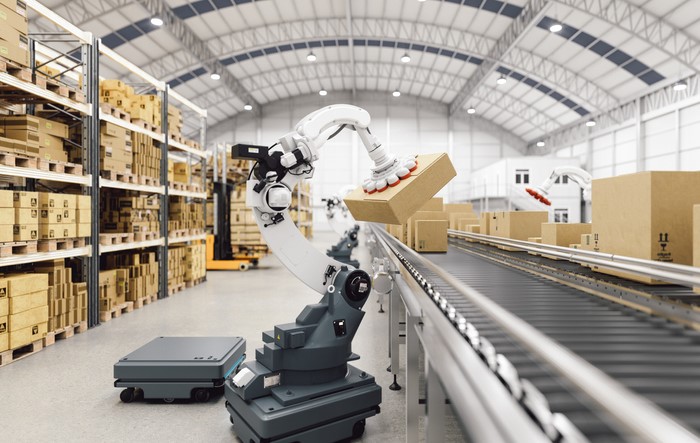A 2024 article based on a Zebra Technologies study reveals that logistics managers plan major investments by 2029 to modernize warehouses. The main priorities are automation, artificial intelligence (AI), sustainability, and improving employee engagement.
Warehouse Modernization Accelerates
The study, which surveyed 1,700 supply chain professionals, shows that warehouse transformation is no longer optional but a strategic necessity. In 2024, 63% of decision-makers said they want to accelerate the modernization of their facilities over the next five years. This urgency is driven by growing pressure to improve performance, manage increasingly complex flows, and meet speed expectations.
Automation is the main driver of this shift. Sixty-one percent of companies plan to automate their processes by 2029. The main reasons are reducing errors, improving safety, and freeing workers from repetitive tasks. Seventy-four percent of respondents believe their teams spend too much time on tasks that could be automated.
The Central Role of AI and Data Management
Operational visibility is another major priority. Eighty-four percent of decision-makers believe that better visibility is essential to make more informed decisions and automate processes. To achieve this, they plan to invest in supplier management and inventory tracking tools.
Artificial intelligence is at the heart of this strategy. Sixty-five percent of decision-makers intend to deploy AI technologies to improve performance, optimize workflows, and implement predictive maintenance. Furthermore, 63% plan to integrate AI software into their warehouses within five years. These tools will be used in particular to detect anomalies, prevent safety risks, and optimize inventory management through demand forecasting.
Employee Engagement as a Key Success Factor
The study highlights a significant shift in perception: technology is no longer seen as a constraint but as an asset for employees. Eighty-nine percent of operators feel more valued when using modern equipment. A large majority (93%) view new technologies as a factor that boosts attractiveness and retention.
Leaders have understood this challenge well: 91% of decision-makers now involve their teams in decisions related to automation. This collaborative approach marks a major change, moving from top-down management to collective intelligence.
Balancing Innovation and Operational Reality
Modernization does not come without challenges, such as calculating return on investment, integrating new technologies, and training teams. To overcome these, companies are adopting a balanced approach, combining process optimization with skills development.
In addition to automation and AI, decision-makers are focusing on other essential aspects. Fifty-nine percent plan to improve workforce management, and 60% are committed to increasing their investments in sustainable technologies. The goal is to achieve performance that is simultaneously economic, social, and environmental.






